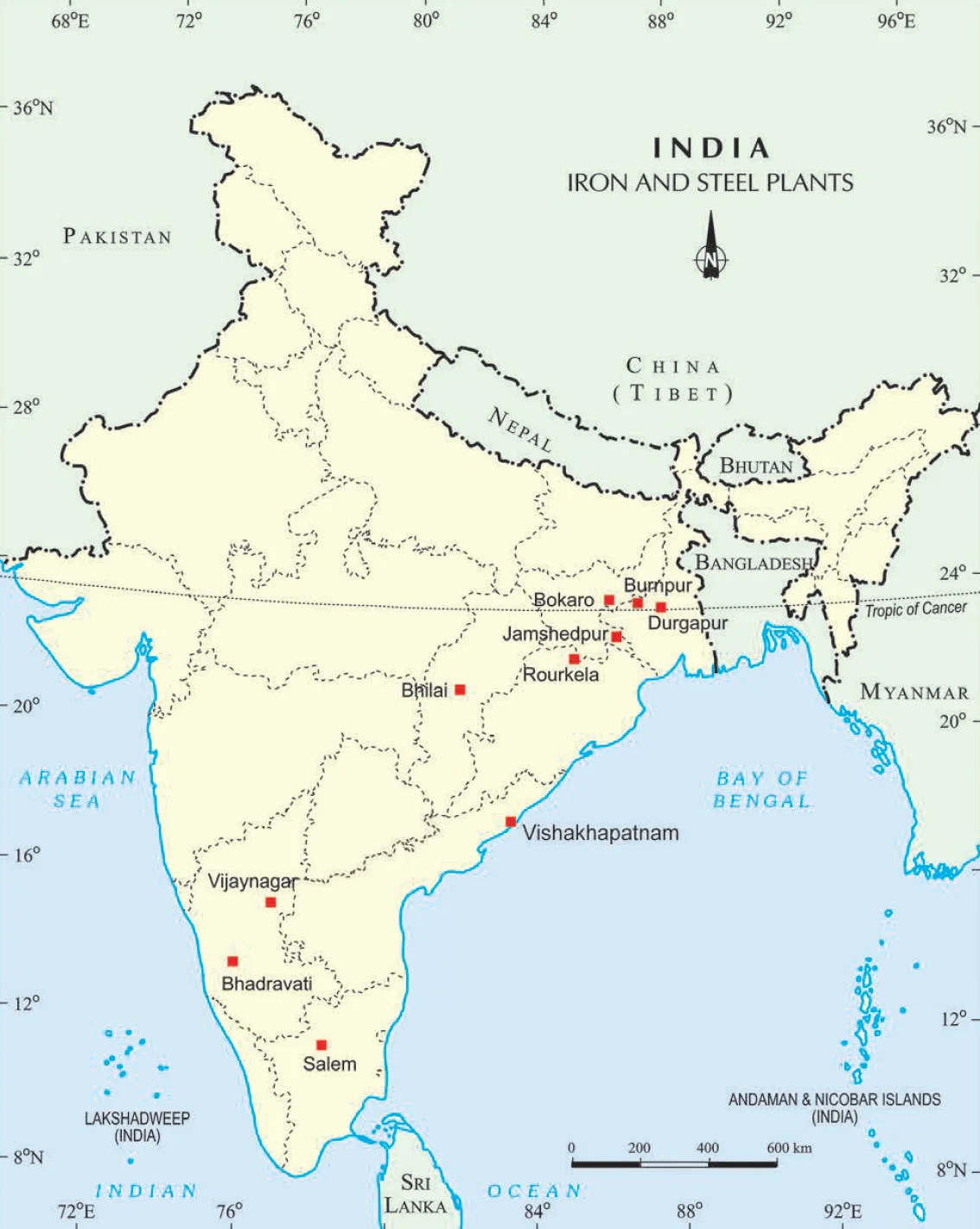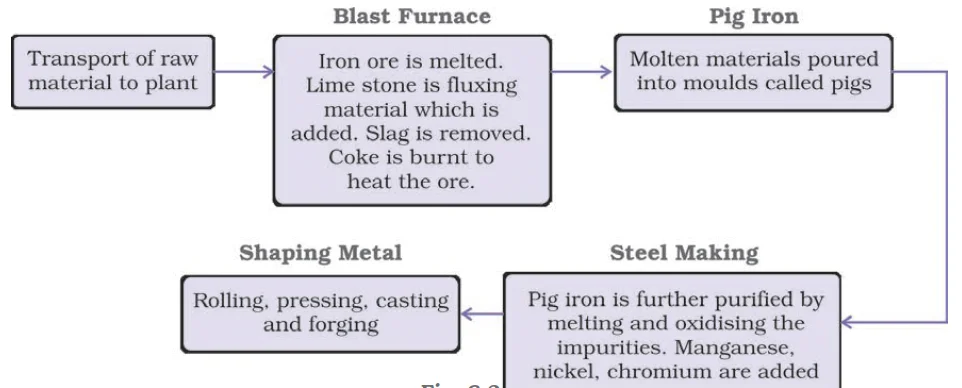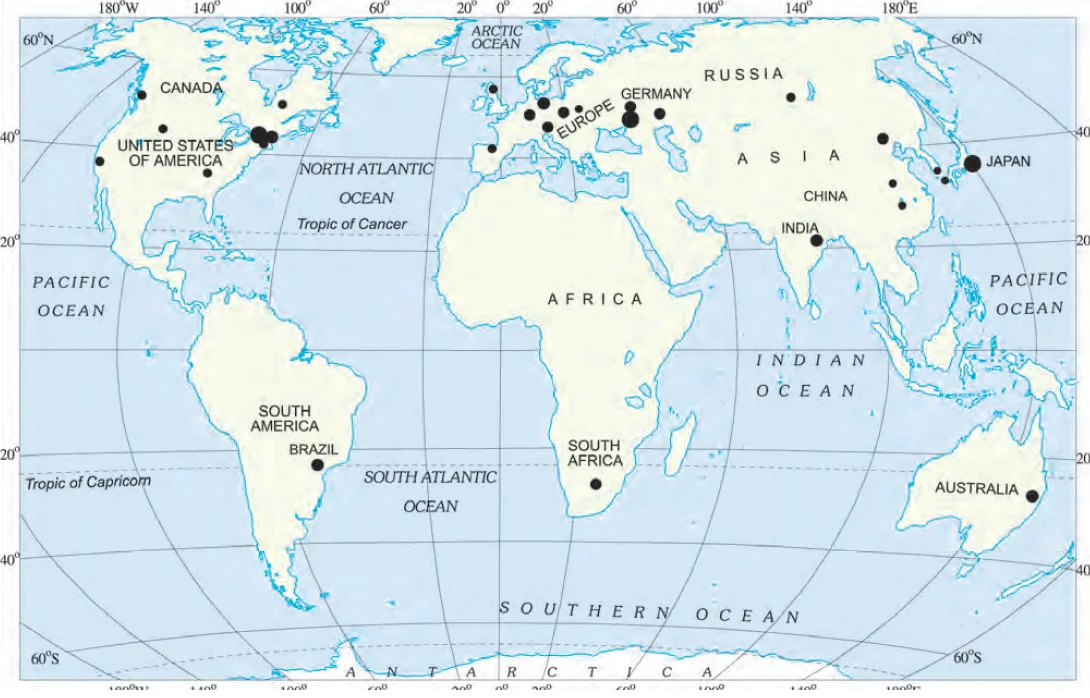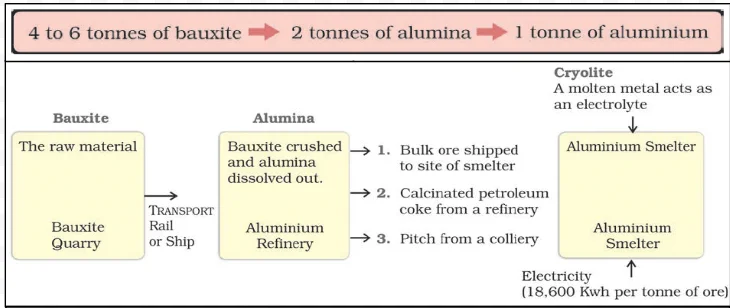![]() 9 Dec 2023
9 Dec 2023
These industries use minerals as a raw material. Some industries use ferrous metallic minerals which contain ferrous (iron), such as iron and steel industries but some use non-ferrous metallic minerals, such as aluminium, copper and jewellery industries. Many industries use non-metallic minerals such as cement and pottery industries.
Here’s a brief overview of industries that use ferrous and non-ferrous metallic minerals


Process of obtaining steel

Changing location of the iron and steel industry

Process of Manufacture of Steel
|
Case Study on Jamshedpur and Pittsburg Jamshedpur:
|
|---|
|
Pittsburg:
|

World: Major Iron Ore Producing Areas
Aluminium Smelting: Harnessing Light, Resilient, and Versatile Metal for Modern Industries
|
Do You Know? Bauxite, the raw material used in the smelters during manufacturing Aluminium is a very bulky, dark reddish coloured rock. |
|---|

Process of Manufacturing in Aluminium Industry
Nourishing Growth: The Vital Role of the Fertilizer Industry in Agriculture
Also Read: Mitigating Industrial Pollution: Strategies, Impact, Solutions for Environmental Preservation
<div class="new-fform">
</div>